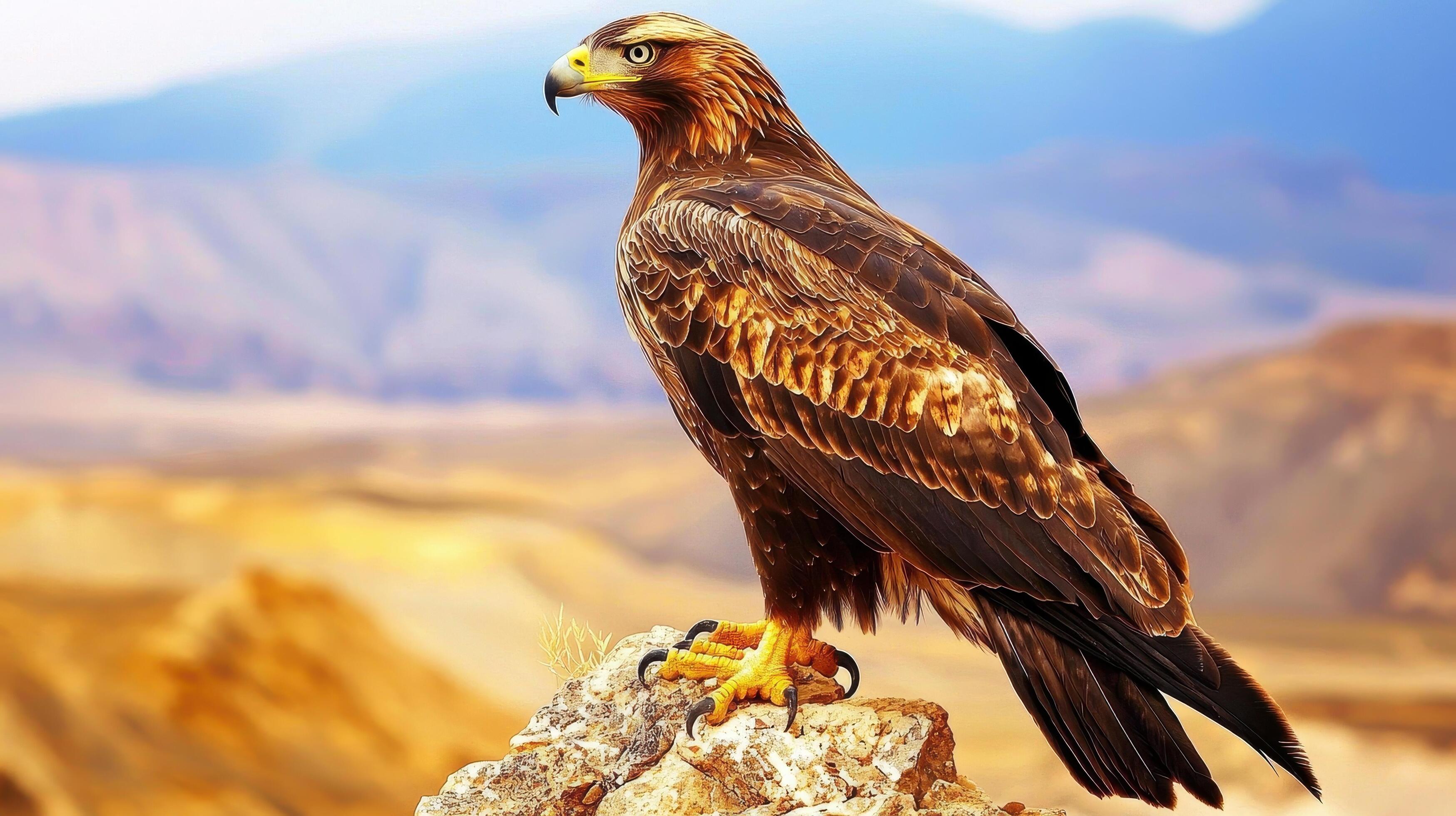Eagles are powerful birds of prey known for their sharp vision, wide wingspan, and strong hunting skills. Found all over the world, they are symbols of freedom, strength, and leadership. Eagles are respected in many cultures and are key to keeping nature in balance.
Scientific Classification
-
Kingdom: Animalia
-
Phylum: Chordata
-
Class: Aves
-
Order: Accipitriformes
-
Family: Accipitridae
-
Genera: Aquila, Haliaeetus, Spizaetus, and others
Common Names
-
Eagle
-
“Ungwu” (Igbo)
-
“Agbe” (Yoruba)
-
“Sha hawai” (Hausa)
-
“King bird” or “Sky lord” (nicknames in English)
Eagles are admired across cultures as symbols of courage and power.
Geographic Distribution
Eagles live on every continent except Antarctica. They are found in:
-
Mountains and cliffs
-
Forests and open savannas
-
Lakes, rivers, and coastal regions
Africa, North America, and Asia have many eagle species, especially in open, high places
Image showing African Fish Eagle perched on a tree (Source: Depositphotos)
Physical Characteristics
Eagles are large, strong birds with hooked beaks, powerful talons, and wide wings.
-
Wingspan ranges from 1.8 to 2.5 meters (6 to 8 feet)
-
Sharp eyes can spot prey several kilometers away
-
Feathers are usually brown, black, white, or golden
-
Strong legs help grip and carry prey
Eagles fly high and fast, often soaring for hours with little effort.
Types of Eagles
1. African Fish Eagle (Haliaeetus vocifer)
Known for its loud call and fishing skills, this eagle is common near African lakes and rivers
Image showing African Fish Eagle grabbing a fish from water (Source:Simple Wikipedia)
Key Facts:
-
White head, brown body
-
Hunts fish and small animals
-
National bird of several African countries
-
Known for its “cry of freedom”
2. Bald Eagle (Haliaeetus leucocephalus)
Native to North America, this eagle is a symbol of the United States
Image showing Bald Eagle flying with white head and tail visible (Source: All About Birds)
Key Facts:
-
White head and tail, yellow beak
-
Prefers water bodies
-
Eats fish and small mammals
-
Not bald, name comes from old English word “balde” (white)
3. Golden Eagle (Aquila chrysaetos)
Found in Europe, Asia, North Africa, and North America, it is a skilled hunter
Image showing Golden Eagle perched on a rocky mountain ledge (Source: Vecteezy:
Key Facts:
-
Dark brown feathers with golden neck
-
Hunts rabbits, snakes, and birds
-
Flies very fast and strikes quickly
-
Often nests on cliffs or tall trees
Diet and Hunting
Eagles are carnivores, meaning they eat meat. Their diet includes:
-
Fish, birds, and small mammals
-
Snakes, lizards, and carrion (dead animals)
-
Some can hunt animals heavier than themselves
Eagles have strong eyesight, claws (talons), and curved beaks to help catch and eat prey.
Fun facts
-
Eagles can see four to five times better than humans.
-
A baby eagle is called an eaglet.
-
Eagles can fly over 3,000 meters (10,000 feet) high.
-
They mate for life and use the same nest every year.
-
An eagle’s nest, called an aerie, can be 2 meters wide and deep.
Importance to Humans
Eagles affect people in both cultural and environmental ways.
Positives:
-
Symbol of pride and courage in many countries
-
Help control pests like rodents and snakes
-
Attract tourists and birdwatchers
-
Inspire stories, flags, and traditional names
Negatives:
-
Sometimes steal poultry from farms
-
May clash with humans when nesting near homes or fishing areas
Health & common issues
In the wild or in rescue centers, eagles can face several health risks.
Common health concerns include the following:
-
Broken wings from collisions or traps
-
Lead poisoning from eating hunted animals
-
Eye infections or injuries
-
Parasites like mites or worms
Veterinary Needs:
-
Rescue and rehab centers for injured eagles
-
Large, safe cages with space to fly
-
High-protein diet and clean water
-
Quiet, stress-free environments
Conservation Status
Not all eagles are safe. Some species are threatened or endangered due to:
-
Habitat loss from logging and farming
-
Illegal hunting and egg collection
-
Pollution in rivers and forests
-
Climate change affecting prey availability
Conservation Efforts:
-
Wildlife protection laws
-
Nesting zone monitoring
-
Public education about the role of eagles
-
Banning harmful hunting practices
Some eagle species, like the Bald Eagle, have made a strong comeback thanks to protection efforts.
Comparison: Eagle vs Hawk
| Feature | Eagle | Hawk |
|---|---|---|
| Size | Larger, heavier | Smaller and faster |
| Prey | Larger animals | Insects, rodents, small birds |
| Habitat | Mountains, lakes, forests | Forests, farms, urban areas |
| Strength | Powerful talons and beak | Fast strikes and sharp vision |

Image showing Eagle soaring in the sky with wings fully spread (Source: iStock)
Do you need wildlife care, bird health services, or vet help for injured raptors? Contact Doctor Hulk Veterinary Hospital Today @ 08143397614.















Reviews
There are no reviews yet.